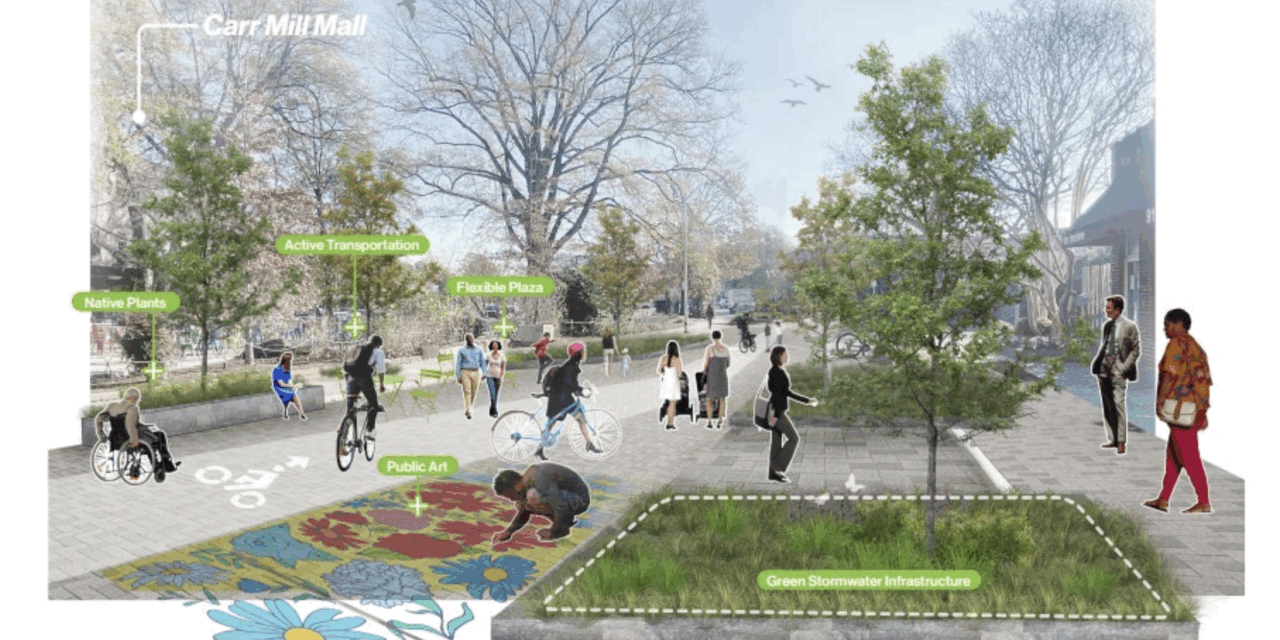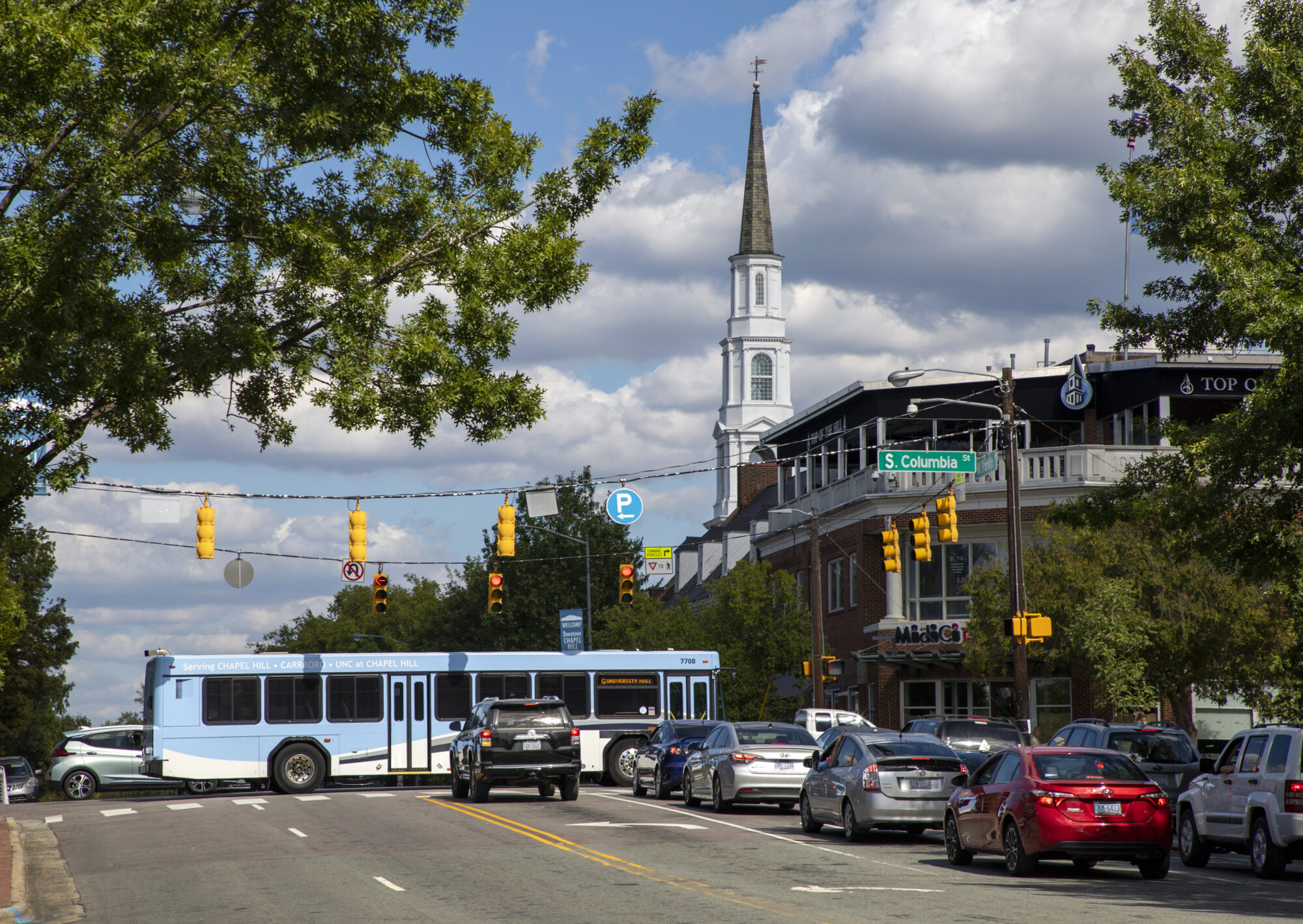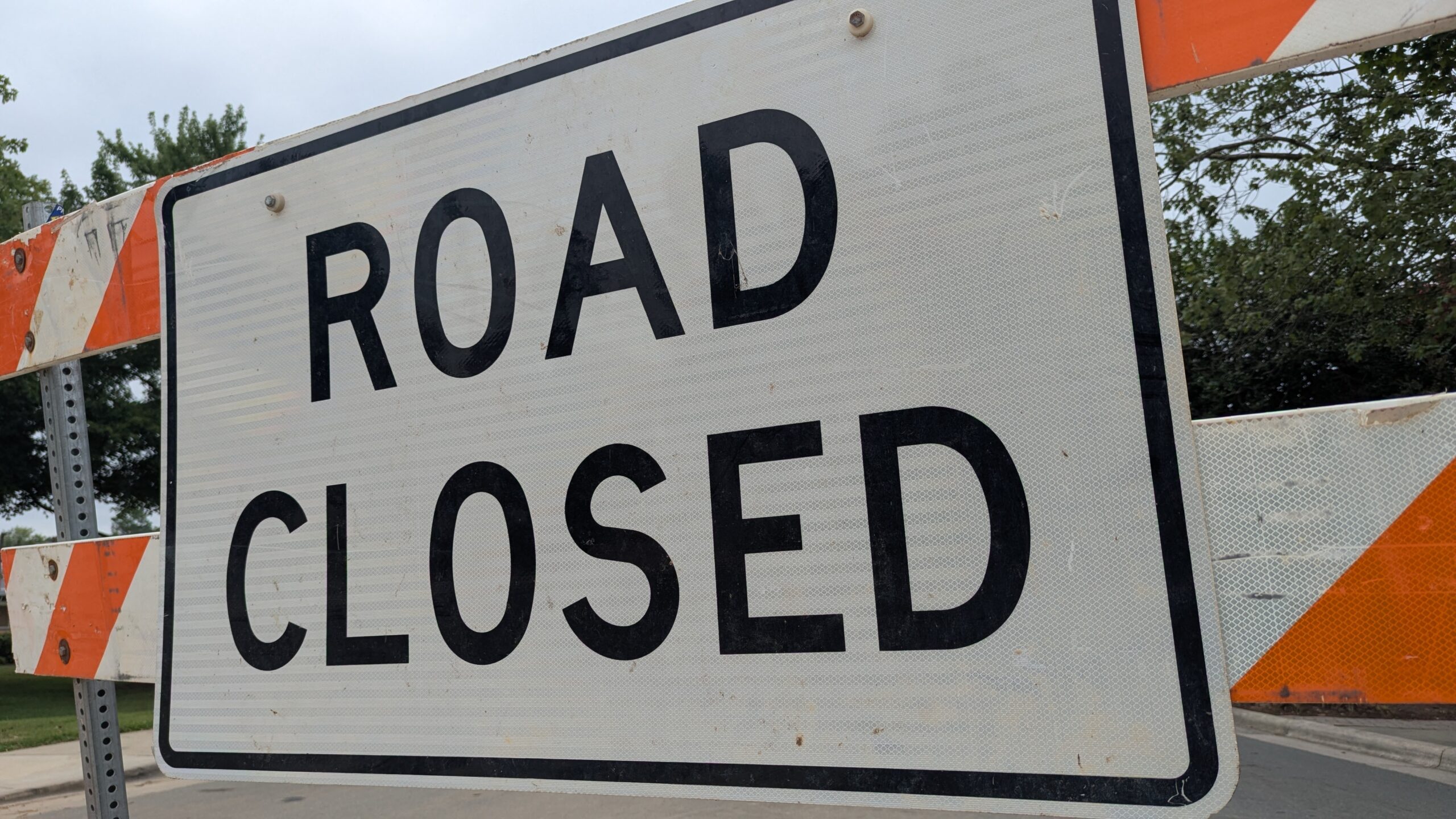At its last meeting before the summer break, the Carrboro Town Council heard an update on the reimagining of East Weaver Street — a project that would close the two-way road to vehicles to create a pedestrian and bicycle only plaza.
At the June 17 meeting, Planner Duncan Dodson presented preliminary findings from a third-party engineering firm’s capacity study for the project. He said the study is still under review by the North Carolina Department of Transportation, and it focuses on how the road closure would impact traffic patterns on neighboring streets.
The presentation included potential design scenarios to alleviate future congestion on and around the roads. Although East Weaver is largely favored by bicyclists and pedestrians, with Weaver Street Market and local businesses nearby, the road closure would divert traffic to North and South Greensboro streets and East and West Main streets.
Dodson said the study saw the longest car lines over the weekend between 11 a.m. and 1 p.m, as well as between 4 p.m. and 6 p.m. during the week, often extending beyond Shelton Station Apartments and Lloyd Street. He said the town’s recommendations for infrastructure changes seek to improve both bike and pedestrian safety and traffic volume.
At minimum, Dodson said the town would likely need to simplify the intersections bookending the plaza and create new pavement markings informing cyclists, pedestrians, and cars of new traffic patterns. The study also recommends restriping additional crosswalks for pedestrian visibility.
“We see the highest volumes of bicyclists and pedestrians at each end of the closure at North Greensboro and Main Street, as well as a high volume of pedestrians over there on West Weaver on Saturday due primarily to the farmers market,” Dodson said. “Those are good locations to keep in mind as we talk about these intersections.”
In addition to the minimum required infrastructure changes, the town’s recommended design improvements include adding a southbound through-lane at North Greensboro. Using existing pavement, another is creating three exclusive northbound travel lanes at South Greensboro where there are currently only two. That effort seeks to reduce the line of cars, as well as improve access to side streets and nearby businesses.
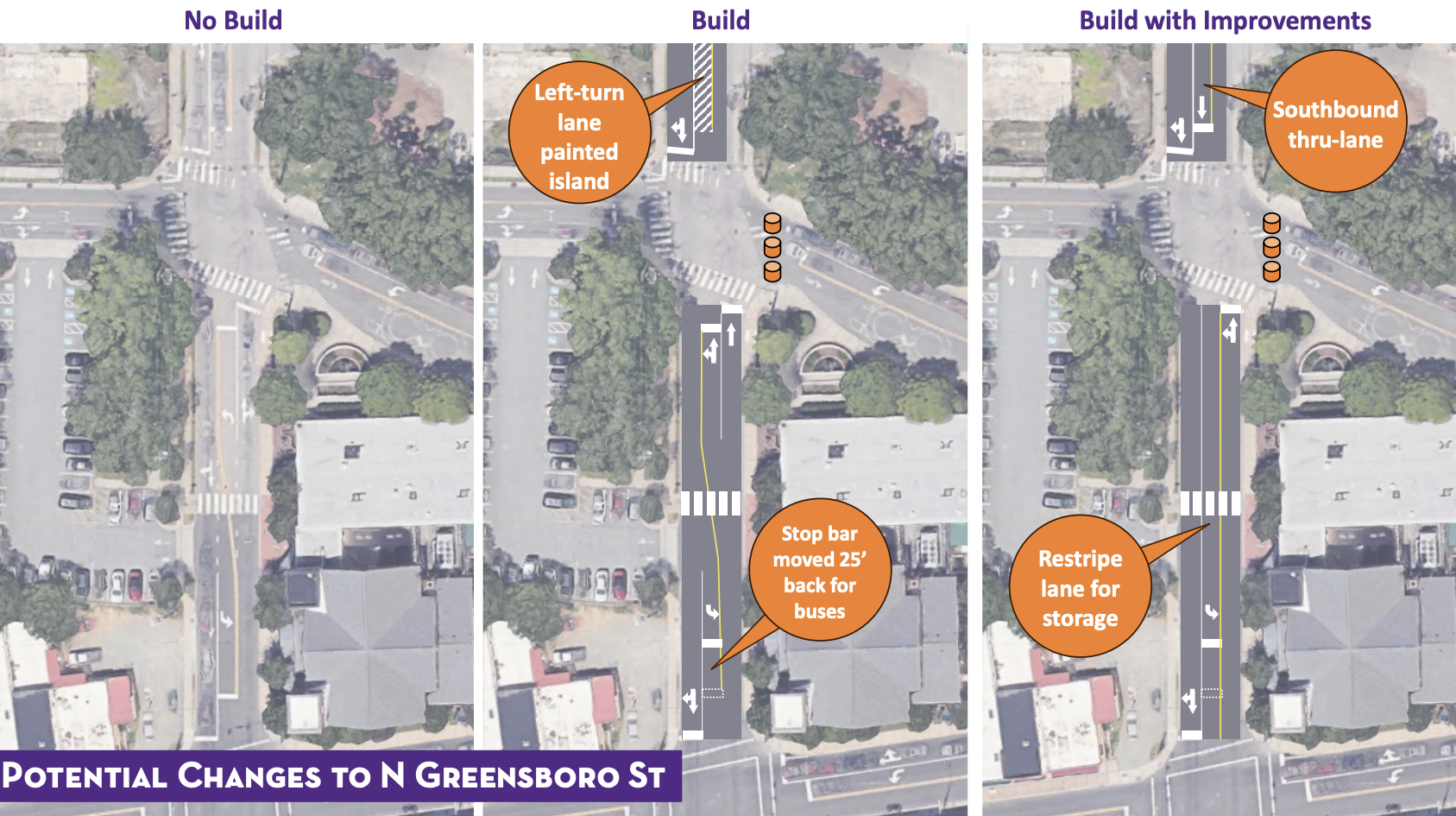
The Town of Carrboro’s potential redesign scenarios for improving traffic volume on North Greensboro Street, including turning the southbound left turn lane into either a painted island or a through-lane. (Image via the Town of Carrboro.)
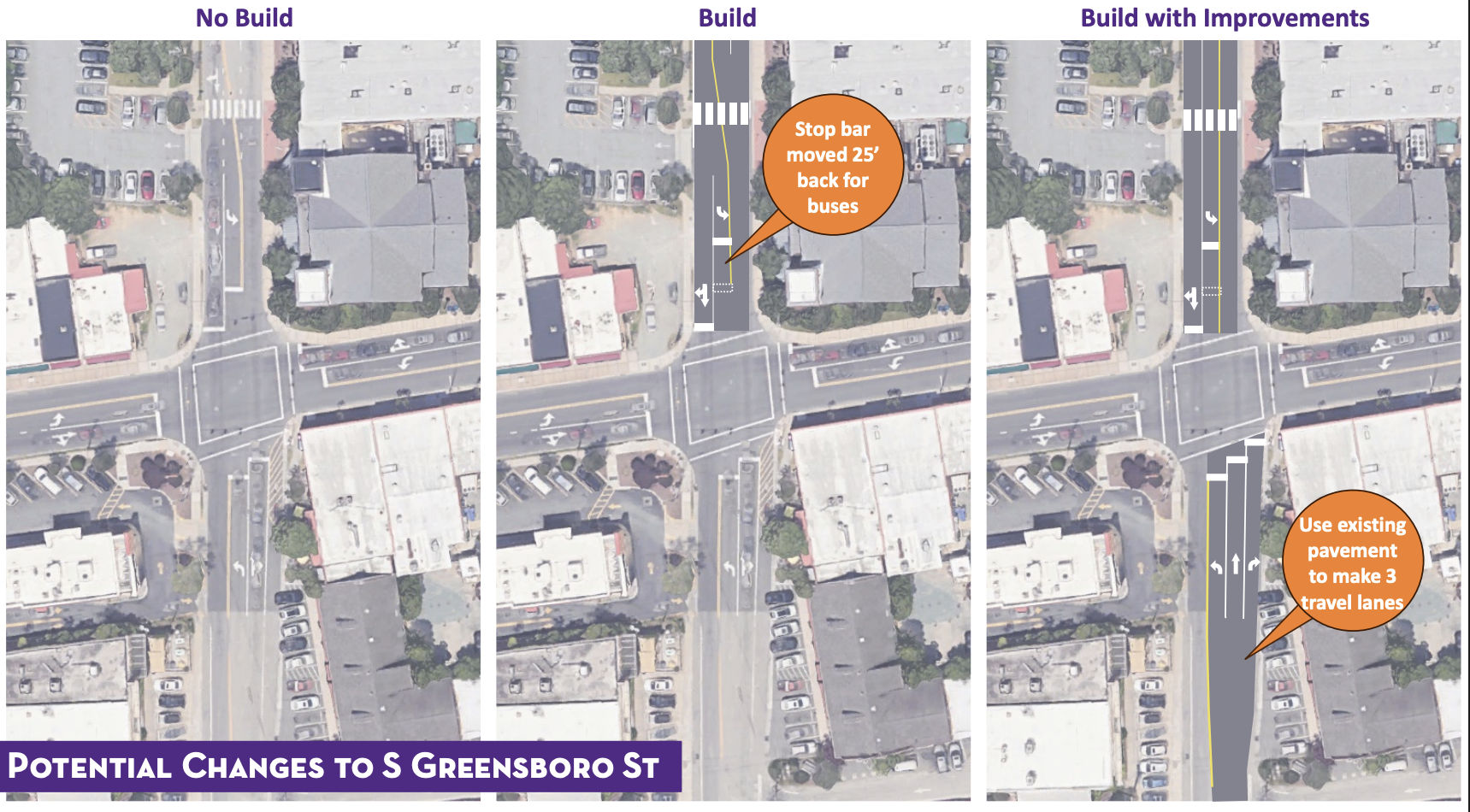
The town’s potential changes for South Greensboro Street include moving the bus stop bar back 25 feet and using existing pavement to create three exclusive northbound travel lanes. (Image via the Town of Carrboro.)
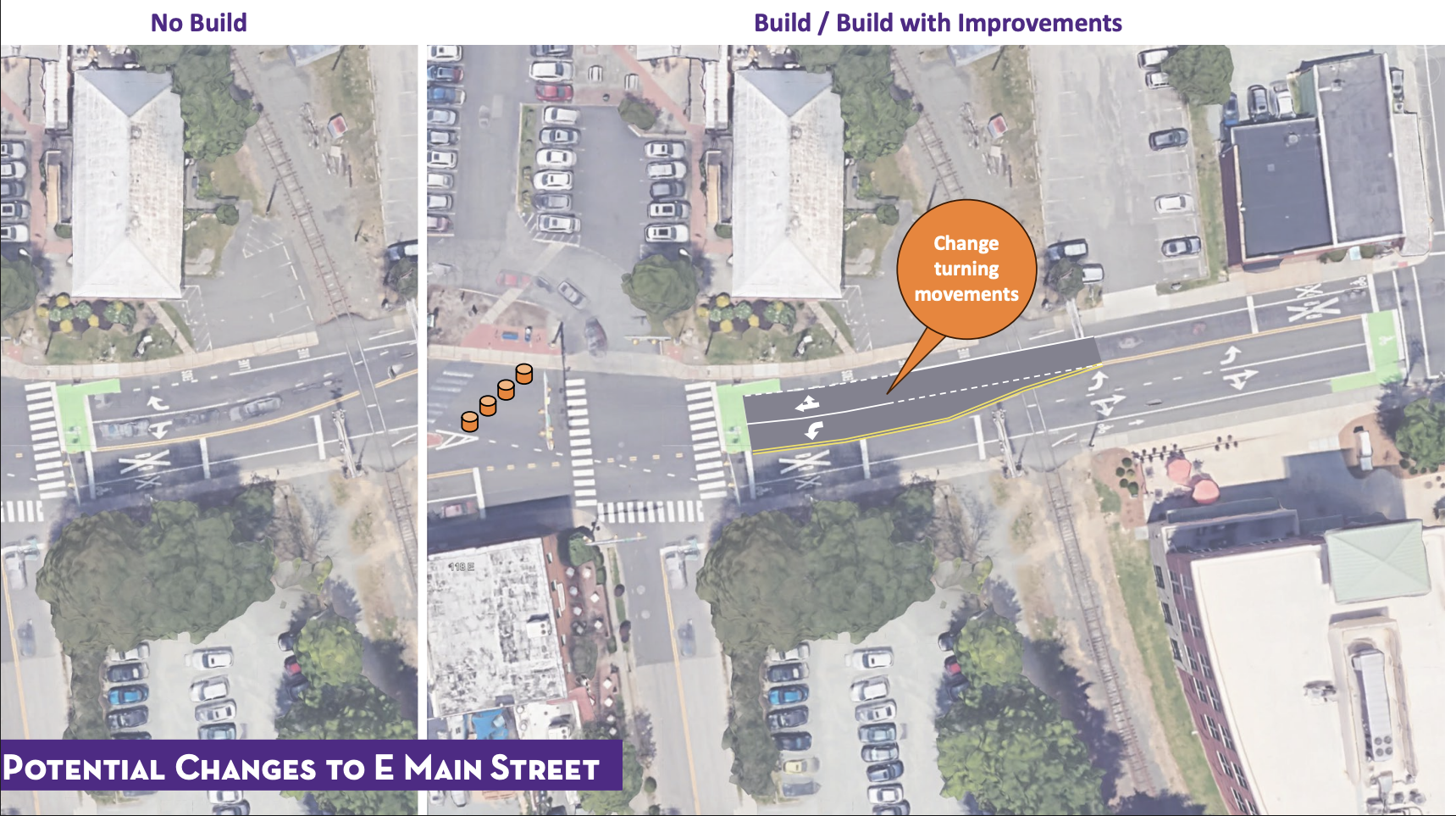
Both the town’s potential build scenarios include restriping East Main Street’s westward lanes. (Image via the Town of Carrboro.)
As the project aims to attract more foot traffic to East Weaver and its businesses, the planner said delivery trucks are a significant access consideration as the town moves forward with the project. For example, he said the capacity study did not account for deliveries on East Main, but they will likely contribute to queuing on the roads.
“Some businesses are in favor of this effort,” Dodson said. “That speaks to the kind of town Carrboro wants to be, with the caveat that the town finds solutions to these questions about deliveries, solid waste, pickup, and impacts to operations here.”
Both build scenarios also feature moving South Greensboro’s stop bar back to give more room to turning Chapel Hill transit buses, as Dodson said the F and CW routes would be rerouted from East Weaver to East Main Street.
Local EMS services have also been involved with the study, and while still able to respond to emergencies with the road closure, Dodson said they shared concerns about making it through the queue lines. And going beyond the minimum requirements would “drastically” reduce congestion downtown, he explained.
“Carrboro Fire is often responding to Chapel Hill emergencies and Chapel Hill Fire is often responding to ours,” Dodson said. “And they’re moving through this kind of downtown core to get to those emergencies.”
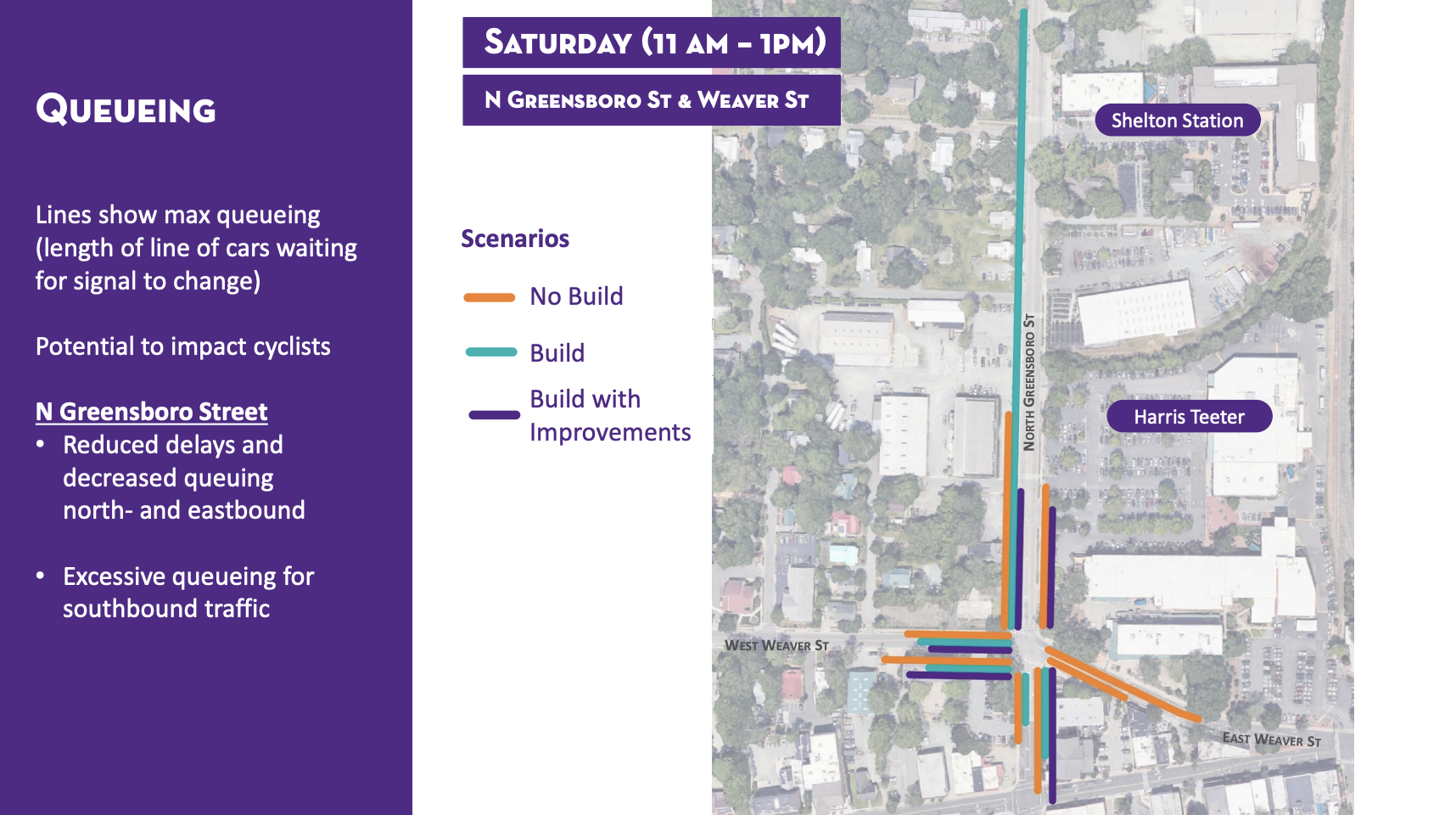
Current queueing at North Greensboro and Weaver streets at peak weekend hours, compared to traffic volume under the town’s potential redesign scenarios. (Image via the Town of Carrboro.)
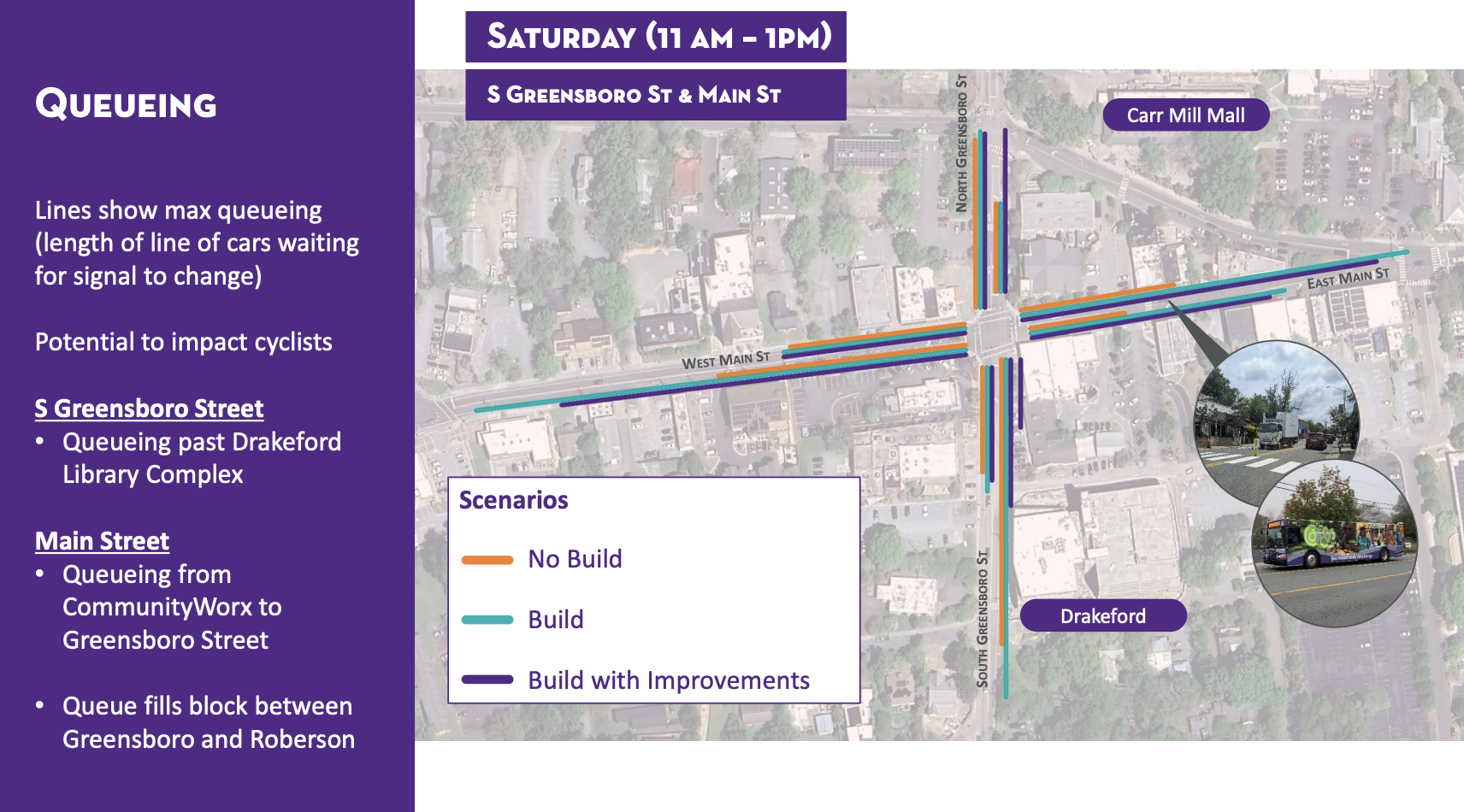
Current queueing at South Greensboro and Main streets at peak weekend hours, compared to traffic volume under the town’s potential redesign scenarios. (Image via the Town of Carrboro.)
While the council did not give a preferred design scenario, Council Member Catherine Fray said it is nice to see what kinds of improvements the town could consider.
“And to be able to see that in the study, they don’t result in traffic getting worse, and at some key points result in it getting better,” Fray said. “It would be really interesting if build with improvements turned out — from Chapel Hill Transit’s point of view — to resolve the potential impacts on the buses. I mean that the buses are waiting less time on East Main because we’re fixing the queuing problem there. That’s just something I’m really excited to keep an eye on.”
Dodson said next steps for the summer include exploring a town code amendment to establish a social district within the right-of-way, as well engaging stakeholders and those impacted by the potential road closure.
“We are specifically wanting to reach out to members of the business community, partnering with Jon Hartman-Brown, the economic development director, reaching out to residents in the Lloyd-Broad neighborhood,” Dodson explained. “A lot of that is also dependent on this ongoing conversation with NCDOT.”
Until the department completes its review of the capacity study, Dodson said there is no specific timeline for the next steps, but stated how the town plans to start community engagement initiatives before the council reviews the project again in the fall. There, the town also plans to provide a report on the project’s costs, design, and schedule.
To view the full Town Council meeting, click here.
To learn more about the project, click here.
Editor’s Note: An earlier version of this article incorrectly indicated the Town of Carrboro conducted the capacity study. It has since been updated to correctly reflect it was a third-party effort.
Featured photo via the Town of Carrboro.
Chapelboro.com does not charge subscription fees, and you can directly support our efforts in local journalism here. Want more of what you see on Chapelboro? Let us bring free local news and community information to you by signing up for our newsletter.

